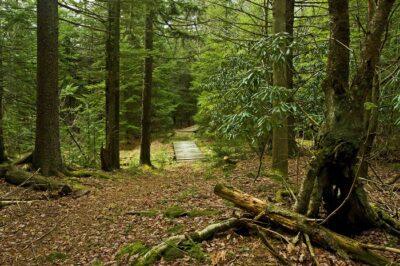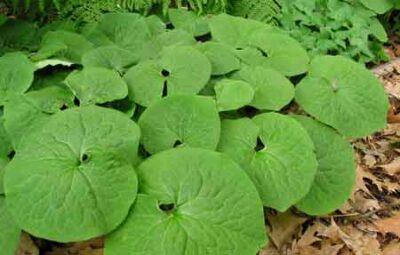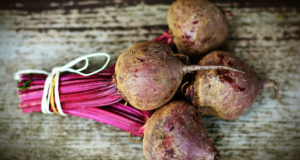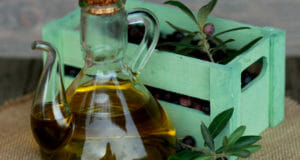If you ever find yourself in a survival situation, maintaining your health is dependent on more than just being able to find sufficient shelter, food and water. In fact, fear and uncertainty engenders extreme stress in humans, which in turn, adversely affects the immune system. Consequently, it is imperative that you have knowledge of medicinal plants in addition to knowledge of how to build survival shelters and obtain food and water. This article will describe five medicinal plants that will serve as substitutes for the various medicines people commonly keep in their medicine cabinets such as aspirin, antacid, antiseptic and antibiotic ointments. Also, it will answer for each plant the four questions: What is it used for? Where do I find it? How do I identify it? How do I prepare it?
Wild Garlic (antiseptic/antibiotic) — The root bulbs of wild garlic plant (Allium vineale) contain both a powerful antiseptic and an antibiotic compound. Therefore, the bulbs are usually crushed and the expressed juice is applied externally for cleansing wounds. They can be ingested orally for treatment of colds, sinus congestion, earaches,stomach aches and headaches as well as for reducing fevers and coughs.
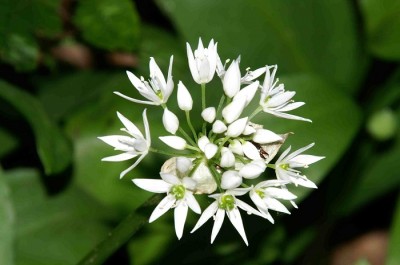
Wild garlic. nrca-railroad.com
Wild garlic is found throughout much of North America and it prefers to grow mainly in fallow fields, but can also be found growing alongside roads, ditches, and most any other place flowering plants and weeds are able to grow. Wild garlic is a perennial, flowering evergreen that grows to a height of 8 to 24 inches with long, lance-shaped green leaves sheathing approximately half of the stalk, and it produces either white or pink flowers and broadcasts a strong garlic odor.
Echinacea (immune system booster/antihistamine) — Echinacea (Echinacea angustifolia) consists of three different species: the purple coneflower, the pale purple coneflower, and the narrow-leaved purple coneflower, and all three species are considered to be a non-specific immune system booster. Consequently, it is used similar to an antibiotic to help heal both external and internal infections. Therefore, it can be used topically as either a poultice, a tincture or a salve to aid in healing cuts and abrasions, wounds and burns, and can be taken internally as either a tisane (tea), a tincture (a concentrated tisane), or a dried extract to treat internal infection, colds and flu. In fact, clinical studies have shown that ingesting this plant can significantly reduce both the severity and duration of both cold and flu symptoms. Last, it has traditionally been used as a treatment for both spider and snake bites to help alleviate the tissue and nerve damage caused by the poison that these creatures inject.
The Hidden Secrets Of Making Herbal Medicines…Right At Your Fingertips!
The pale purple coneflower occurs naturally throughout the central and midwestern United States, ranging from Texas to Minnesota and as far west as Colorado, and has a distinct preference for meadows and open prairies where they mix with other perennial grasses. The purple coneflower (Echinacea purpurea) is a species that occurs naturally mostly in the eastern states ranging from Louisiana to Georgia and Minnesota to Maine, and it prefers to grow in open woods and thickets. Furthermore, the narrow-leaved purple coneflower is a tap-rooted perennial that grows 6 inches to 20 inches in height and has stiff, hairy, lance-shaped, green leaves topped by a flower with a prominent, cone-shaped, disc surrounded by long, slim, drooping, purple petals. Whereas, the pale purple coneflower (Echinacea pallida) is similar in appearance to the purple coneflower but grows up to 40 inches in height and produces a larger flower with petals up to 4 inches in length that range from off-white to purple in color. Last, the purple coneflower (Echinacea purpurea) is similar in appearance to both the narrow-leaved purple coneflower and the pale purple coneflower but commonly grows to a height of 24 inches to 36 inches and has oval shaped, green, leaves with coarsely toothed edges. Like the purple coneflower, it produces a flower with a prominent, cone-shaped, bristle-like disc in the center surrounded by oval-shaped petals that range from off-white to purple in color. Last, Echinacea can be applied externally as a poultice or a salve or ingested internally as either a dried powder, a tisane, a tincture or an extract.
Wild Ginger (nausea & vomiting) — Wild ginger root (Asarum canadense) is a well-known and widely accepted natural remedy that has been used for thousands of years for relieving nausea and vomiting. The roots of this plant have been used by many Native American tribes as a remedy for indigestion, cramps, sore throats, coughs, colds and nervous conditions. Also, it prefers dense forests with a mature canopy and is mainly found east of the Mississippi River but ranges as far north as Canada, as far south as Alabama and as far west as Oklahoma and North Dakota. In addition, wild ginger is a ground-hugging plant that spreads via runners and displays green, heart-shaped leaves and maroon, urn-shaped flowers with three distinct petals that appear at the intersection between the runner and the leaf. The root is commonly ingested orally as an expressed juice by chewing a portion of the root. However, it also can be prepared as either a tisane or a tincture and then ingested orally. One warning: wild ginger contains a potent carcinogen, aristolochic acid.
Jewelweed (Poison Oak rash/antihistamine) — Jewelweed (Impatiens capensis) is a well-known and widely accepted natural remedy for relieving the rash caused by contact with poison oak. Both the leaves and stems of the plant contain lawsone, which may explain its antihistamine and anti-inflammatory properties and thus, it is traditionally used as a remedy for insect bites, sores, cuts, bruises, sprains, burns, eczema and ringworm, and as a cure for the rash caused by poison oak. Jewelweed is predominately found east of the Rocky Mountains but does occur incidentally further west. It prefers to grow in shady spots where there is moist, sandy, well-drained soil and therefore, you will find it in lowlands, wetlands, fens and adjacent to streams, ponds, lakes and bogs. In addition, it is often found growing adjacent to patches of poison oak. Furthermore, jewelweed (aka spotted touch-me-not) is a smooth annual flower that grows 3 to 5 feet in height and has oval leaves with serrated edges, and the lower ones are placed opposite of each other whereas the upper ones are alternate. The funnel-shaped flowers are suspended from a single stem and appear yellow with red spots. The flowers of the jewelweed plant are usually crushed and applied directly to the poison ivy rash as either an expressed juice or as a poultice, but the stems can be used if the plan is not in flower. Also, you can create either a tisane or a tincture and then apply it topically.
Could This All-Natural ‘Detox’ Capsule Have Extended John Wayne’s Life?
White Willow (mild pain reliever) — White willow (Salix alba) bark is one of the most well-known sources of salicin, which is oxidized in the human bloodstream and the liver to produce salicylic acid, the natural form of aspirin. Therefore, it is used like aspirin to relieve minor pain caused by over-exertion, minor injuries, headaches and inflammation as well as to reduce fever and cure diarrhea. White willow can be found nationwide, but it should be noted that because all species of willow tree require copious amounts of water to survive, they can only occur naturally near water sources. Therefore, look for white willows near creeks, streams, rivers, ponds, lakes, swamps and bogs. The white willow is a medium to large deciduous tree growing up to 90 feet tall with a trunk up to 3 feet in diameter and an irregular, often-leaning, crown. The bark appears gray-brown and is deeply fissured in older trees. The shoots are typically gray-brown to green-brown and the leaves usually measure 4 to 8 inches long and one-fourth inch to three-eighths inch wide. They are paler than most other willows due to a covering of very fine, silky, white, hairs, particularly on the underside. Last, white willow bark is typically ground, steeped in boiling water, and ingested orally as a tincture.
What is your favorite wilderness medicine? Share your medicinal tips in the section below:
 Off The Grid News Better Ideas For Off The Grid Living
Off The Grid News Better Ideas For Off The Grid Living

